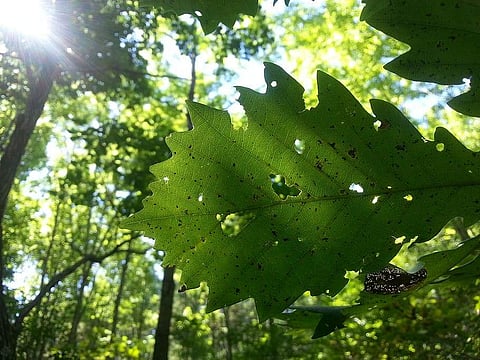

A new study from Harvard, UMass Amherst, Boston University and MIT has revealed that a tree's carbohydrate reserves are crucial to surviving an onslaught of hungry caterpillars.
The findings of the study were published in the journal 'Functional Ecology'. A recent multi-year outbreak of an invasive moth killed thousands of acres of oak trees across southern New England. But interspersed among the wreckage were thousands of trees that survived. The biology of trees makes them resilient to even the most severe stressors. "Oak trees are planners, in a way," said Meghan Blumstein, NSF Post-doctoral Research Fellow at MIT and a co-author of the study. "Some of the food they make during the growing season is used immediately for energy and some is stored in the stems and roots for a rainy day. With stored carbs, they are able to immediately create a new flush of leaves after an insect outbreak," added Blumstein.
But trees are not invincible, and the new study revealed the specific threshold of reserves necessary for them to survive -- 1.5 per cent carbohydrates in their dried wood or about 20-25 per cent of their normal storage capacity. The repeated emergence of Lymantria dispar (an insect formerly known as "gipsy moth") from 2016 to 2018 challenged trees' resilience by defoliating them year after year. "The trees that died were the trees that were out of reserves," said lead author Audrey Barker Plotkin, a Senior Scientist at the Harvard Forest.
But the location of the trees mattered, too. The research team found that trees growing along forest edges tended to have more reserves, even at the same level of defoliation, making them more resilient than interior forest trees. The research team posited that forest edge trees may have simply experienced less severe defoliation in the years before 2018. And, because edge trees get lots of light, they may also be able to rebound without drawing down their reserves as much as their interior forest counterparts.
The new study has provided direct evidence, that had until now been lacking, that trees can indeed starve to death when insects invade. This more nuanced understanding will help improve forest resilience models as new pests and a shifting climate continue to drive change in the region.
